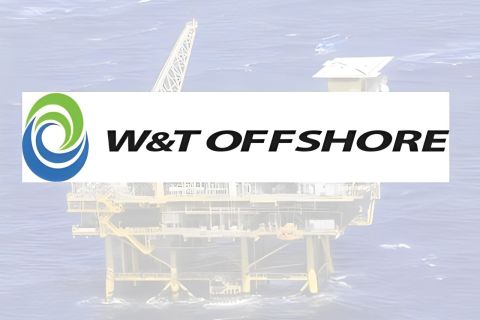Deepwater oil and gas exploration, generally defined as greater than 300 m (1,500 ft) water depth, started in the Gulf of Mexico (GoM) during the early 1980s and expanded worldwide in the 1990s. The initial exploration phase in the deepwater GoM was based on seismic amplitude anomalies, called bright spots at the time but now called direct hydrocarbon indicators (DHIs), on salt-related structural closures. Later, DHIs proved to be critical for stratigraphic traps.
Today most of the deepwater GoM exploration is sub-salt, where the seismic imaging is poor because of complex seismic ray paths through salt. This makes DHI interpretation very difficult. However, the GoM was the proving ground for DHI technology to expand around the world, notably offshore West African basins, including stacked channel sands on elongated closures in Angola and fan lobe stratigraphic traps in Ghana. Also, in the last few years there have been large discoveries in the Mediterranean Sea, offshore East Africa, and a new discovery off the coast of South America.
Most deepwater reservoirs are turbidite sands, channels, and sand lobes originally deposited in a slope or basin setting. The acoustic properties (velocity and density related to rock physics) of turbidite sands in contrast with the overlying shales are generally in the range where channels and sand fairways can be mapped. Regional geology basin studies and well control, if available, are integrated with the 3-D seismic interpretation. The presence of gas and oil in turbidite sands will cause a change in the acoustic properties, and thus DHIs can be identified.
Even though DHI technology is more than 40 years old, research continues to improve the risk analysis work process, the reliability of estimates of probability of geological success (Pg), and the oil and gas resources on a prospect. Rock physics studies are important to classify the geologic setting of the sands, ranging from unconsolidated sands (called amplitude versus offset or AVO Class 3, consisting of low-impedance gas sands or bright spots); to modestly consolidated sands (called AVO Class 2, consisting of a very weak reflection at near offsets with a sharp increase in amplitude with offset or angle); to AVO Class 1 (consisting of very consolidated sands or dim spots). AVO Class 4 gas sands are a subset of Class 3, where the amplitude is flat with offset or where it dims with offset (caused by a high-impedance shale, siltstone, or carbonate above a good-quality, low-impedance gas sand). In an exploration setting, it is very difficult to distinguish oil versus gas using DHI technology because oil contains dissolved gas, and reservoir quality variations are a factor.
During the past 12 years, I have been fortunate to lead a team that has managed Rose & Associates’ DHI Interpretation and Risk Analysis Consortium. Forty-five oil companies have been members of our consortium for at least one phase, and there are currently 22 member oil companies in Houston and Europe. The consortium has reviewed 224 drilled DHI prospects worldwide, comprising 60% from the GoM and an increasing number of North Sea/North Atlantic and Africa prospects. Many of the prospects are Tertiary-age sands, but DHI successes are present in rocks as old as the Cretaceous and Triassic. The acoustic properties of the sand and overlying seal (rock physics) are the discriminating factors, not the geologic age.

In this example of a DHI success, two gas pays are shown with a low-saturation economic seal failure likely related to a late-moving fault. (Image courtesy John O’Brien, The Leading Edge, 2004)
We have documented the seismic/rock physics data quality and up to 35 seismic anomaly characteristics of each prospect with a grading system that allows us to identify the most important seismic anomaly characteristics and document reasons for failure.
Lessons learned:
- It is always important to understand the geologic setting, including depositional environment, so the interpreter can classify the DHI as a Class 1, 2, 3, or 4 AVO anomaly prospect;
- Seismic and rock physics data quality is important. Propriety data processing with emphasis on the interval of interest is much better than spec data. Seismic gathers, the data from varying offsets that make up a single seismic trace, should be carefully reviewed because of their impact on AVO and amplitude versus angle studies;
- There is no single “silver bullet.” There should be multiple positive anomaly characteristics to have a high probability of geologic success;
- There is a threshold effect on the high and low ends of the Pg range (5% to 90%). At the upper end of the risk spectrum there is a point (DHI threshold) at which a significant amount of risk has been reduced so that the final Pg is dramatically increased. At the lower end of the risk spectrum there is a low Pg threshold, below which essentially most wells are failures;
- The most important anomaly characteristics are downdip conformance to structural contour, flat spot, character and phase change at a downdip structural contour, consistency of the amplitude in the target area, and several AVO characteristics where calibration to well data is critical to map the separation of acoustic properties between wet and gas/oil sands. The latter is especially important for AVO Class 2 prospects; and
- The most frequent reason for DHI failures is wet sands, often blocky, thick, and high-porosity. The second most frequent reason is low-saturation gas, especially in the GoM and Asia Pacific. There are many other reasons for failure, including low impedance, shales, low-permeability gas-filled siltstones, and seismic processing artifacts.
Finally, it’s very important to have a systematic and consistent work process to interpret and risk seismic amplitude anomalies. The process is as important as the numerical analysis. Peer group reviews, experience in risking seismic amplitude anomalies, and commonsense thinking are essential for a company to build a successful exploration portfolio.
Recommended Reading
Chesapeake Slashing Drilling Activity, Output Amid Low NatGas Prices
2024-02-20 - With natural gas markets still oversupplied and commodity prices low, gas producer Chesapeake Energy plans to start cutting rigs and frac crews in March.
Enbridge Advances Expansion of Permian’s Gray Oak Pipeline
2024-02-13 - In its fourth-quarter earnings call, Enbridge also said the Mainline pipeline system tolling agreement is awaiting regulatory approval from a Canadian regulatory agency.
Will the Ends Justify the Means for W&T Offshore?
2024-03-11 - After several acquisitions toward the end of 2023, W&T Offshore executives say the offshore E&P is poised for a bounce-back year in 2024.
PrairieSky Adds $6.4MM in Mannville Royalty Interests, Reduces Debt
2024-04-23 - PrairieSky Royalty said the acquisition was funded with excess earnings from the CA$83 million (US$60.75 million) generated from operations.
Exxon Mobil, Chevron See Profits Fall in 1Q Earnings
2024-04-26 - Chevron and Exxon Mobil are feeling the pinch of weak energy prices, particularly natural gas, and fuels margins that have cooled in the last year.




